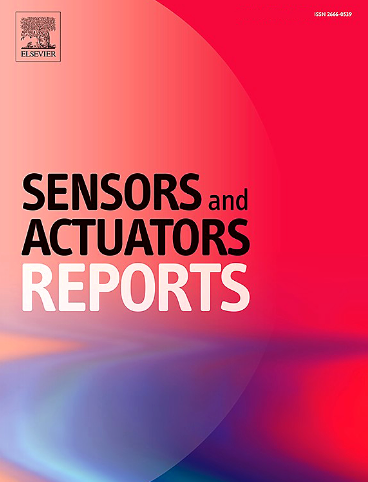Laser-induced graphene electrochemical immunosensors for rapid and sensitive serological detection: A case study on dengue detection platform
IF 6.5
Q1 BIOTECHNOLOGY & APPLIED MICROBIOLOGY
引用次数: 0
Abstract
Here, we present a diagnostic on a chip platform based on laser-induced graphene (LIG) electrochemical immunosensors for serological detection. The electrochemical immunosensors are fabricated through CO2 laser induction on polyimide (PI) sheets. Optimal electrochemical activity of LIG electrodes is obtained under optimized conditions of laser fluence. To verify the application, the serological detection platform was demonstrated. After functionalization with dengue virus (DENV) antigen, the LIG electrochemical immunosensors are able to sense the presence of mouse anti-flavivirus monoclonal (4G2) antibody in a wide linear working range of 25–20,000 ng/ml with the limit of detection (LOD) of 17.41 ng/ml. A specific recognition with 4G2 antibodies against with media protein and isotype is confirmed. Furthermore, the reliability of LIG electrochemical immunosensors compared to conventional enzyme-linked immunosorbent assay (ELISA) is verified through the NS1 antibodies identification in human blood serum clinical samples at room temperature. Our results highlight that the LIG-based electrode is a promising platform for electrochemical immunosensors, aimed at developing reliable and practical diagnostic tools for serological detection. These tools enable early diagnosis of infectious diseases, as well as non-invasive and rapid screening.

用于快速灵敏血清学检测的激光诱导石墨烯电化学免疫传感器:登革热检测平台的案例研究
在这里,我们提出了一种基于激光诱导石墨烯(LIG)电化学免疫传感器的血清学诊断芯片平台。采用CO2激光感应技术在聚酰亚胺(PI)片上制备了电化学免疫传感器。在优化的激光通量条件下,获得了LIG电极的最佳电化学活性。为了验证其应用,对血清学检测平台进行了演示。经登革病毒(DENV)抗原功能化后,LIG电化学免疫传感器能够在25 ~ 20,000 ng/ml的宽线性工作范围内检测小鼠抗黄病毒单克隆(4G2)抗体的存在,检出限(LOD)为17.41 ng/ml。证实了4G2抗体对介质蛋白和同型的特异性识别。此外,通过室温下人血清临床样品的NS1抗体鉴定,验证了LIG电化学免疫传感器与传统酶联免疫吸附法(ELISA)相比的可靠性。我们的研究结果强调,基于lige的电极是电化学免疫传感器的一个有前途的平台,旨在开发可靠和实用的血清学检测诊断工具。这些工具有助于传染病的早期诊断,以及非侵入性和快速筛查。
本文章由计算机程序翻译,如有差异,请以英文原文为准。
求助全文
约1分钟内获得全文
求助全文
来源期刊

Sensors and Actuators Reports
Multiple-
CiteScore
9.60
自引率
0.00%
发文量
60
审稿时长
49 days
期刊介绍:
Sensors and Actuators Reports is a peer-reviewed open access journal launched out from the Sensors and Actuators journal family. Sensors and Actuators Reports is dedicated to publishing new and original works in the field of all type of sensors and actuators, including bio-, chemical-, physical-, and nano- sensors and actuators, which demonstrates significant progress beyond the current state of the art. The journal regularly publishes original research papers, reviews, and short communications.
For research papers and short communications, the journal aims to publish the new and original work supported by experimental results and as such purely theoretical works are not accepted.
 求助内容:
求助内容: 应助结果提醒方式:
应助结果提醒方式:


